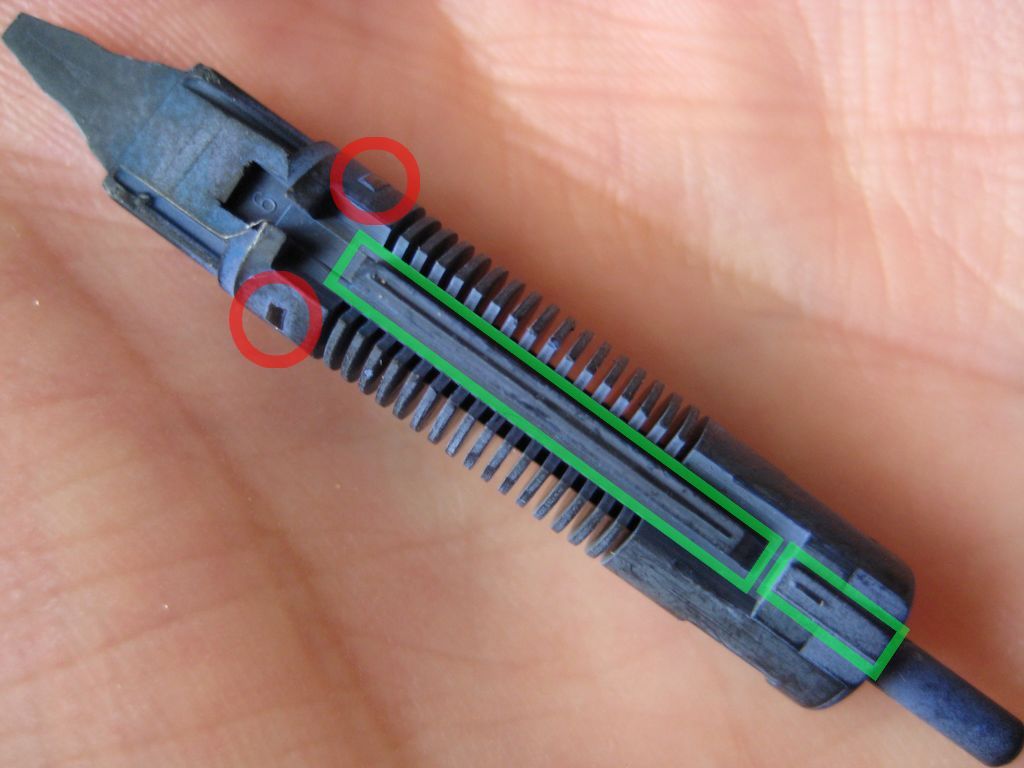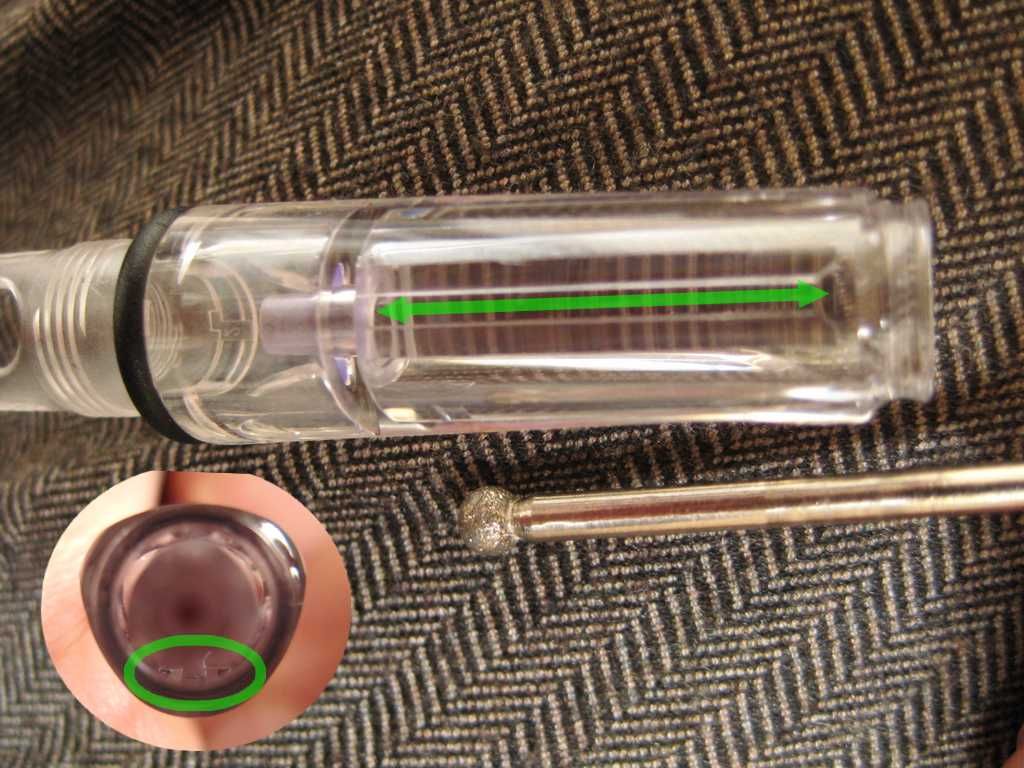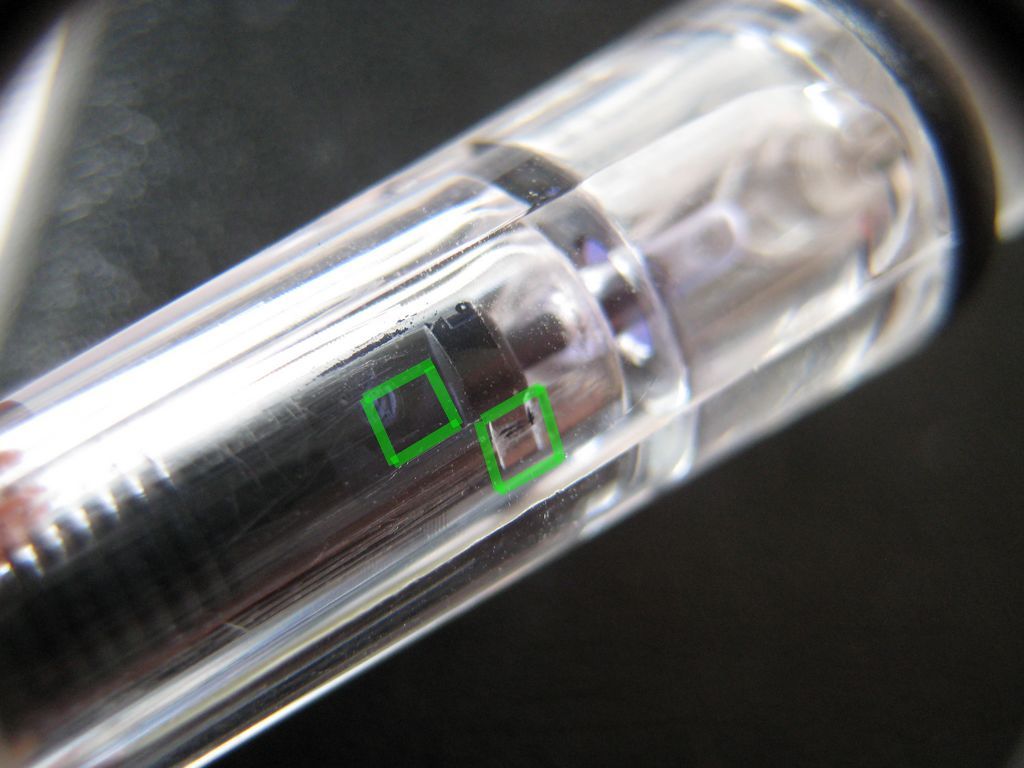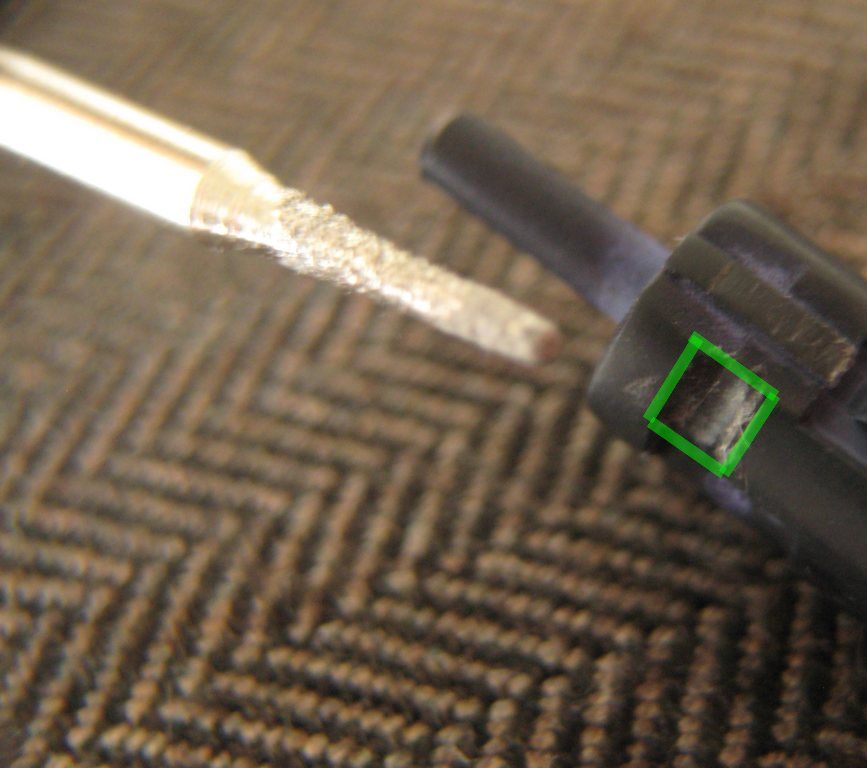 |
| By rotating the Lamy Vista's nib & feed relative to the grip section, I can finally put ink to paper! |
RESISTANCE IS FUTILE
As an inexpensive path to trying out a 1.5mm italic nib, a couple of months ago I bought a Lamy Vista, the transparent version of the popular Safari fountain pen. I've since found out two things: that I quite like the nib, and that I hate the Vista's grip section.
Like Parker's 75, the Lamy Safari/Vista has a bevelled, 'ergonomic' grip section. Unlike the 75, the nib cannot be rotated to accomodate the user's hand. Instead, it is fixed in rotation relative to the grip; a tab running the length of the feed slots in place between two dedicated channels within the section itself. The photo below shows the pen's section - two deep recesses run the length of the grip, forcing thumb and forefinger between them.
 |
| Arrowed and highlighted: the Lamy Vista's grip bevelling runs the entire length of the section. |
Therein lies the problem; the nib is in perfect, equidistant alignment between the two recesses. Unfortunately, it is the curse of Man that this noble symmetry is an impossible aspiration; his ill-hewn thumb and forefinger are of different lengths.
 |
| Left: Palmar aspect of primate specimen Homo Sapiens. Contrast with that of specimen Homo Vista, right. |
The inevitable consequence of my evolutionary shortcoming is a pronounced tilt to port. On horror's head, horrors accumulate; the width of the italic tines demands perfect alignment of nib to paper before any ink can flow through their gap. As shown below, I'm well off target when letting the section cradle naturally between thumb and forefinger!
 |
| Using the Vista's grip bevelling, so little of the 1.5 nib meets the paper that ink flow is prevented. |
What's Been Changed
For the similarly unevolved, there is a crude DIY solution. Usual caveats apply, do so at your own risk, etc. etc. Having said that, I've been using the modified pen for about two weeks now, without any change in the way it writes; no feed flooding or starvation, no burping or splattering, no hard starting, no mess with repeated capping and uncapping. The nib is now rotated to the right of centre, allowing it to meet the page head on while thumb and forefinger still fall between the two grip recesses in a natural way. The nib and feed are still secure in the section, there's no looseness or play of any kind.
How
Have a look at this informative video on Ink Nouveau, the Goulet Pen Company's blog. The main obstacle to shifting the nib round is a large key running the length of the feed slots between two channels in the section, but there are a few more things to look out for too: a pair of slightly raised tabs in the section click into recesses at the feed's shoulders, and a raised area at the top of the feed helps it friction fit into place. Sanding and shaving at all of these allows the nib & feed to shifted round, while leaving enough material to ensure it stays securely in place.
The main task was the lopping off some of the key running the length of the feed's backside, highlighted in green below. The small tabs circled in red were left alone, so far as I remember.
 |
| For the chop: the feed key, highlighted in green. |
A craft knife shaved off the offending key quite nicely.
 |
| Thus always to tyrants! |
The slot for this key makes for a more prolonged annoyance. Reaming out the edges with a mini-drill ball attachement eventually wore them down enough ( I didn't trust myself enough to use the drill itself) . The inset in the photo below shows the offending edges face-on.
 |
| So not the boss of me: the Vista section's anti rotation slot. |
The top of the feed also has a slight key to it, I couldn't see a corresponding section channel so I suppose it's more of an aid to friction-fitting. This part can be detached from the rest of the feed before shaving, so that swarf doesn't foul the ink/air channels and regulating fins.
 |
| Removing the detachable top key reveals the ink and air channels. |
The last major obstacle was the two raised tabs towards the barrel end of the section. These click into slots in the feed, which were of course out of alignment when the feed was rotated to my preference. One of these tabs, and its corresponding feed slot, is highlighted in green below.
 |
| Lamy have certainly been very thorough with the feed assembly. Two blisters towards the rear of the section also keep it resolutely in place. |
So that the feed could still click into place instead of just jam in with brute force, the feed slot was extended using a thin mini drill attachment.
 |
| The mini drill made light work of the soft plastic feed. |
Is that it? I think that's it! I've reinserted the nib and feed to the right of the rotation slot. While the huge italic nib gets less use than my less specialised nibs, I do feel this slight change has made a big difference to the Vista's appeal.
 |
| After reassembly... |
 |
| ... and inking. |
Oh, And One Last Thing
Herringbone trousers. Great for judging whether a subject's in focus or not.
Fabulous work! I wonder, if this issue could also be solved by somehow acquiring and using a Lamy nib ground to an oblique?
ReplyDeleteAh, now that very same question was put to me on FPN!
DeleteI wasn't aware of the availability of Lamy oblique nibs, but subsequent googling shows they do indeed make an oblique medium. That would bypass any need for tinkering (if the angle matched the user's hand), though you lose out on the interesting line variation of an italic (the reason I bought this Lamy in the first instance).
wow
ReplyDeleteYou can also get nibs custom ground. I had a Lamy nib custom ground by a company called Pendemonium, and they do offer a ton of options (including oblique grinding). Check them out :) Not affiliated, just had great service from them.
ReplyDelete